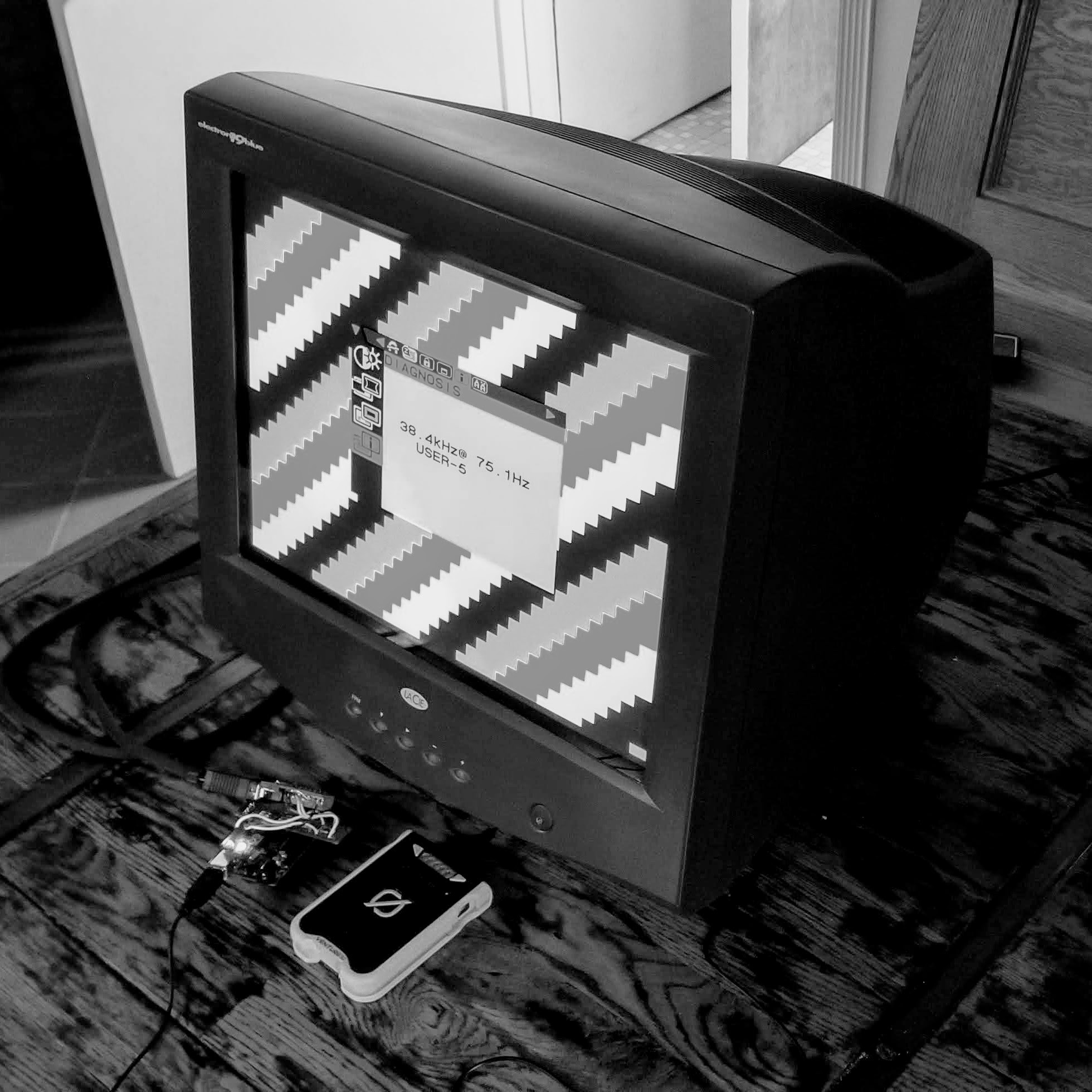Video testing would never be complete until a CRT was put into the mix. This whole exercise started with the assumption that LCDs would handle arbitrary video timing. How hard is it to do a simple linear interpolation and resample at the native resolution of the LCD display? Too hard apparently, or at least no one wanted to deal the potential Nyquist-gone-bad corner case.
Luckily my custom modes are close enough to existing standards to be supported by most reasonable LCD monitors. Older HD or newer UHD TVs not so much, but there is a relatively inexpensive converter box to cover these as well.
It still left a gap though. There once was multi-sync magic where no one cared what resolution you wanted. You just generated as many or as few lines as you wanted. Just pick two frequencies for H and V and bingo, the mode would just work. Were CRTs just a myth?

My last CRT monitor was jettisoned over a decade ago, so the hunt was on. I was able to find a retired graphics designer who was downsizing and letting go of a LaCie electron 19blue. This circa-2001 display uses a Mitsubishi Diamondtron CRT and supports a horizontal frequency range of 29-110 kHz, a vertical range of 49-140 Hz, and has a video bandwidth of at least 200 MHz.
These specs are way beyond my requirements, so no issues handling whatever I can throw at it. The example below is the 38.4 kHz horizontal timing, but with a vertical timing of 120 Hz. The result is a 300-line display that shows off the scan lines nicely.

120 Hz looks great, but going the other way exposes one long forgotten side-effect of CRTs: Flicker. The advantage, and in some cases disadvantage, of LCDs is the relatively long persistence of the image. CRT phosphors have almost no persistence and they rely on the brain's persistence of vision. The SVGA 60 Hz mode looked fine on the LCD but was almost painful to watch on the CRT.
The VGA 75 Hz mode is a lot more tolerable and would definitely be the preferred choice for any text modes when displayed on a CRT. However, I'm leaning towards supporting both VGA and SVGA for all graphics modes. The 60 Hz SVGA provides the most lines of text for an LCD. If refresh is an issue then the 75 Hz VGA is available at the expense of just a few lines of text.
 Alastair Hewitt
Alastair Hewitt
Discussions
Become a Hackaday.io Member
Create an account to leave a comment. Already have an account? Log In.